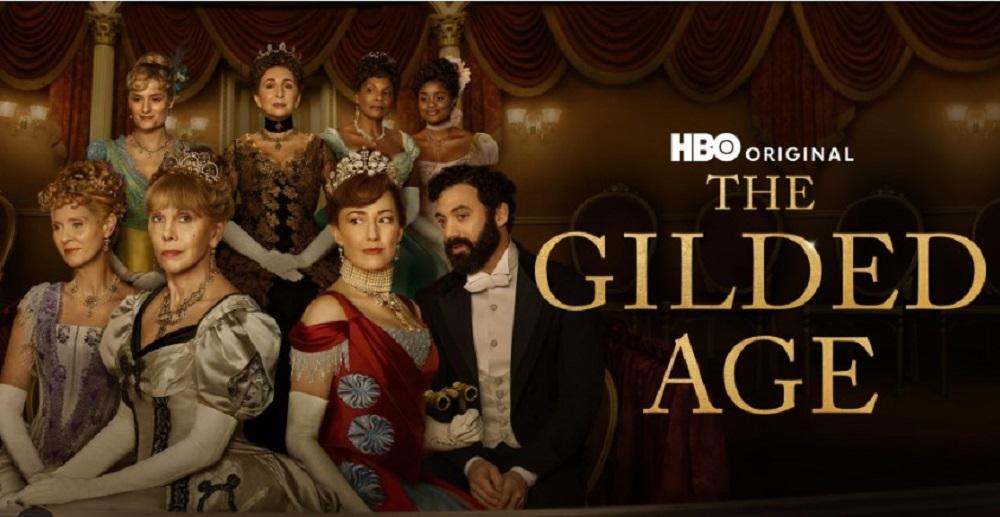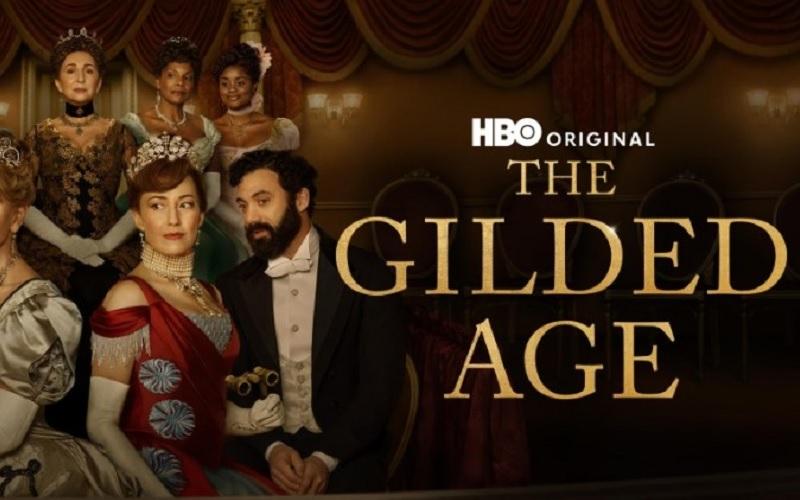
Viewers of The Gilded Age on HBO Max meet several real historical figures mingling with a cast of colorful fictional characters. Although the series takes place in 1882–83, ten years before the Columbian Exposition will open in Chicago, The Gilded Age features several of the designers, participants, and visitors associated with the 1893 World’s Fair.
[This post will be updated as new episodes are released.]
Jane Addams
Social activist Jane Addams is mentioned in Season 2, Episode 4, when Miss Brook is invited to teach a charity class. Addams and Ellen Gates Starr co-founded a settlement house called Hull House in Chicago in 1889. Jane Addams may have had her purse snatched by someone in the enormous crowd on Opening Day at the 1893 World’s Fair.
Frédéric Auguste Bartholdi
In Season 1, Episode 2, Miss Brook and Mr. Raikes meet in Madison Square, where a most interesting item is on display. In an effort to raise funds for placing the Liberty Enlightening the World (a.k.a. the Statue of Liberty), sculptor Frédéric Auguste Bartholdi sent to America the statue’s right arm holding the torch. The famous French sculptor visited the World’s Fair in Chicago while on a tour to pitch his next big idea to place his sculptures in America. His statue of Christopher Columbus, cast in solid silver by the Gorham Manufacturing Company, astounded visitors to the company’s pavilion in the Manufactures and Liberal Arts Building, while his Washington and Lafayette sculptural group was exhibited in the Palace of Fine Arts. Read about his visits in “Frédéric Auguste Bartholdi’s Visit to the 1893 Columbian Exposition in Chicago”
Clara Barton
Red Cross founder Clara Barton (played by Linda Emond) is introduced in Season 1, Episode 3. Barton visited the 1893 World’s Fair and spoke at the Congress of Representative Women on May 15 and again at a closing banquet on May 20.
Thomas Edison
Inventor Thomas Edison (played by Mat Hostetler) lights up Park Row at the end of in Season 1, Episode 7. Edison visited the 1893 World’s Fair, though famously steered clear of the Electricity Building. By 1893, he was attempting to move beyond the competitive field of electrical generation and lighting and instead focus his attention on chemistry and metallurgy. Despite that, evening illumination of the White City palaces continued to amaze visitors to the Fair, as it does the Gilded Age characters a decade prior. During his incognito visit to the fairgrounds, Thomas Edison was spotted quietly eating pancakes (from Aunt Jemima herself!) in the Agricultural Building.
Mrs. Stuyvesant (“Mamie”) Fish
American socialite and self-styled “fun-maker,” Mrs. Stuyvesant Fish (played by Ashlie Atkinson) pulls several main characters in the Gilded Age through her social games. Marion Graves Anthon (“Mamie”) Fish was among a small sampling of New York society who visited the Columbia Exposition. She reportedly visited toward the end of May and early June. Her husband, Stuyvesant Fish, served as the President of the Illinois Central Railroad and exerted great power of the operation of the Columbian Exposition. He served for a time on the World’s Columbian Exposition Board of Directors and its Transportation and Ways and Means committees.
Ward McAllister
Managing the ladder as the New attempt to climb their way into Old New York society is Ward McAllister (played by Nathan Lane). New York’s “social dictator” and counselor to The Mrs. Astor did not visit the Exposition, choosing instead to sequester in Newport for the summer of 1893. He did, however, blow his opinions across the pages of Windy City newspapers and started a nasty spat with the Fair’s host city. McAllister served quite a dish of unwanted advice about the social etiquette expected when Chicago hosted the Gotham bluebloods. You can read more about “When Ward McAllister Sauced Chicago.”
New York
Arguably the greatest character in the television series is the city of New York, the setting for nearly all the action. By 1888, New Yorkers began agitating for the United States to host another World’s Fair. In July of the following year, New York Mayor Hugh J. Grant invited 500 prominent citizens to a meeting to discuss a plan to secure the fair for their city. Financial titans such as Cornelius Vanderbilt, J. P. Morgan, and William Waldorf Astor, pledged $15 million in support. Will George Russell join them? Ultimately, New York lost their bid to host when on February 25, 1890, the U.S. Congress selected Chicago as the site for the World’s Columbian Exposition.
Frederick Law Olmsted
The opening shot of Season 1, Episode 1 shows a carriage riding through Central Park, designed by the great landscape architects Frederick Law Olmsted and Calvert Vaux beginning in 1857. In Chicago, Olmsted and Vaux designed Jackson Park and Washington Park and the connecting Midway Plaisance in 1871. Serving as the chief landscape architect of the World’s Columbian Exposition starting in 1890, Olmsted remodeled Jackson Park to serve as the fairgrounds.
John Knowles Paine
In Season 1, Episode 4, composer John Knowles Paine (played by Christopher Brellochs) conducts his Symphony No. 2 performed by the Boston Symphony Orchestra at the Academy of Music. Paine composed “Columbian March” for use in both the Dedication Day and Opening Day ceremonies. You can listen to it on our YouTube channel at https://www.youtube.com/watch?v=e4cXpSozJeo
George B. Post
In Season 1, Episode 3, Mr. Russell mentions “Mr. Post’s new building for the Brooklyn Historical Society.” George B. Post was the architect of the massive 1,345,462-square-foot Manufactures and Liberal Arts Building at the 1893 World’s Fair, the largest building ever constructed at the time.
George Pullman
Chicago train car tycoon George Pullman makes an oblique appearance in Season 2, Episode 4 in the form of a political cartoon criticizing George Russell. A brief shot shows Mr. Russell tightening the vice grip on his workers caught between “LOW WAGES” and “FOUL CONDITIONS.” The cartoon is a direct adaptation of one from the 1894 Pullman strike depicting George Pullman, with a Pullman Company worker caught between “LOW WAGES” and “HIGH RENT” to live in his industry town of Pullman. George Pullman was peripherally involved with the Columbian Exposition.
Emily and Washington Roebling
One storyline in Season 2, Episode 5 involves the building of the Brooklyn Bridge by members of the Roebling family. John A. Roebling (1806–1869) designed the bridge and served as its chief engineer until a bridge injury led to his death. His 32-year-old son Washington Roebling (1837–1926) took over, but in 1870 suffered injury from bridge construction. His wife and self-taught engineer, Emily Warren Roebling (played by Liz Wisan), conducted the chief engineer’s duties. Emily Roebling (1843–1903) served as secretary of the New Jersey Board of Women Managers for the Columbian Exposition, and Washington and Emily visited the Fair. John A. Roebling’s Sons Company of Trenton, New Jersey, exhibited their wire and wire rope in the Manufactures and Liberal Arts Building.
Stanford White
In several scenes of Season 1, Episode 1, viewers are introduced to architect Stanford White (played by John Sanders). White has designed the new (fictional) palatial home of George and Bertha Russell at 61st Street and 5th Avenue. To their dismay, the Russell’s son Larry pines to become an architect. In Season 1, Episode 2, Larry is spotted exiting offices of the firm McKim, Mead & White, which (later) designed the Agricultural Building and the New York State Building at the Chicago fair. In Season 1, Episode 7, Mr. Russell unveils White’s design for a new railroad station in New York. The real Stanford White designed the second Madison Square Garden (1890), topped by Augustus Saint-Gaudens’ statue of Diana, which was moved from New York to the top the Agricultural Building in Chicago.

